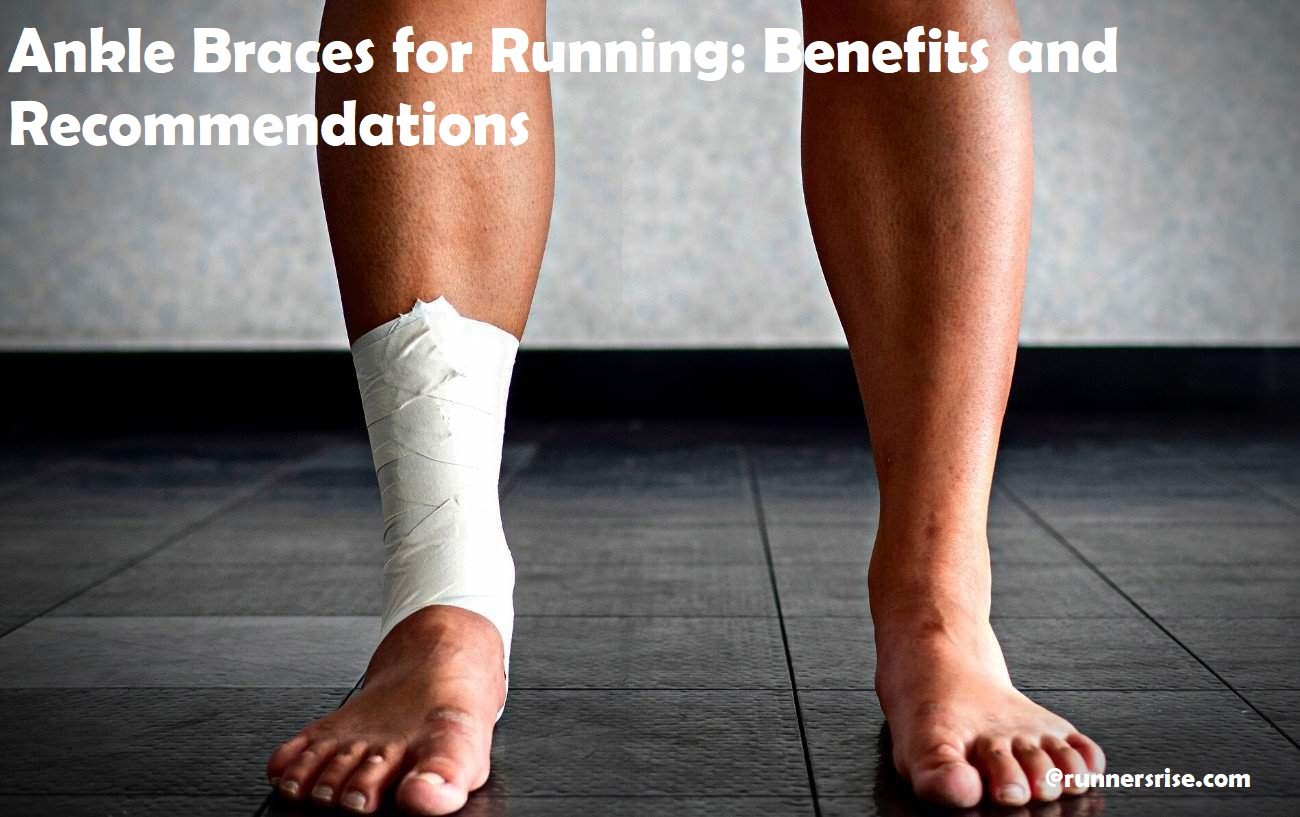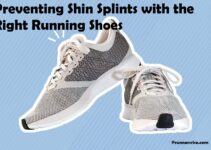Are you looking to boost your running performance? Ankle braces can help you achieve that goal!
With the right ankle brace, you can reduce your risk of injury, improve your stability and power, and enhance your overall running experience.
In this article, we’ll explore the benefits of using ankle braces for running and provide our top recommendations.
Ankle braces are widely used by runners of all skill levels to provide added stability, support and protection from injuries. While many professional athletes wear ankle braces during competition, casual runners can also benefit from them. Braces for running can help reduce the risk of injury and sprain as well as lessen pain and discomfort due to overuse. This guide explains the benefits associated with using ankle braces while running and provides recommendations on selecting the right brace for your needs.
In addition to discussing the advantages of running with an ankle brace, it is important to understand why such an injury-prevention method is important in the first place. Ankles are often prone to sudden strain that usually occurs when pushing off or making a quick turn. Additionally, common complaints among runners include pain in various joints, mainly in the ankles due to overuse or improper form while running. Many casual runners occasionally experience discomfort as a result of tight shoes or tight calves that limit mobility and can increase stress on the ankles when running for long periods of time. Wearing an ankle brace may help reduce such issues by providing additional support and cushioning during exercise.
Benefits of ankle braces for running
Ankle braces for running can provide considerable benefits and relief when used properly. Many of today’s most effective ankle braces are designed with lightweight materials that can be comfortably worn while running. By reducing the chance of rolling the ankle during running, a good quality ankle brace can help reduce pain associated with ankle injuries and sprains.
Ankle braces for running also offer protective benefits with regard to preventing re-injury and instability. Although many lower limb injuries occur as a result of overuse, traumatic episodes are also possible if the runner strikes their foot against an unexpected object or surface while out on the run. A good quality foot brace can prevent such episodes by providing additional support to an injured or weak area of the foot.
In addition to simply providing structural support, a quality anklet brace also serves to reduce vibration during an activity by absorbing any impact shock generated during repetitive landings or take offs during a run or race. Such benefits have been shown to improve stability and protect against future injury in a variety of activities, including running.
Prevention of ankle injuries
Running-related ankle injuries are common, but prevention and proper supportive care can go a long way in preventing them. Ankle braces, or ankle supports, are specifically designed for runners to provide support and limit the range of motion of the ankle joint, helping to protect against sprains and strains during running and other physical activities. By stabilizing the ankle joint and muscles, they help to stop rolling or twisting of the foot that could otherwise lead to an injury. Ankle braces help to protect the ankle by reducing strain on ligaments and muscles while still allowing mobility.
For those recovering from an injury or surgery, supportive braces can provide extra stability as well as a sense of comfort while running. Wearing a brace helps limit scar tissue formation while allowing athletes to safely increase their activity level as they progress through rehabilitation. It also helps cuts down on pain felt after running due to minor sprains or soreness.
Bottom line: Ankle braces offer preventive measures for common injuries in runners, as well as providing support for athletes recovering from prior injuries or surgeries. Wearing one may reduce strain on ligaments and muscles surrounding the joint, minimizing risk for further damage caused by twisting or turning too quickly during your run. They also allow greater range of motion than traditional taping methods but with increased support – offering protection no matter how far you want to run!
Reduced ankle pain and swelling
Using ankle braces for running can help reduce pain and swelling in the ankle. These braces act as a stabilizer and can help the joints of the ankle remain in place during activity. This stability can help alleviate additional strain on the muscles and ligaments around the ankle joint, providing more support when running than without.
Ankle braces may also aid in reducing extra movement that could cause further injury or aggravation. Moreover, they can provide extra warmth to the ankle joint which may lead to increased circulation to the area and improved healing processes. Additionally, if used correctly, an ankle brace may help with posture alignment while running to aid in preventing further sprains or strains while out on a run.
Increased ankle stability and support
When it comes to preventing injuries and improving athletic performance, ankle braces can provide an important layer of protection and stability. Specifically designed to fit the shape of the ankle, they compress and support the joint during movement, while still allowing for ease of movement. This pattern of support helps reduce the risk of knee and low back pain by allowing more even weight distribution across the entire body and providing enhanced agility during sports activities.
Ankle braces also aid in reducing chances injuries due to overly lateral movement by keeping the ankle joint aligned in a more natural motion during dynamic movements such as running or jumping. Further insult may be avoided since there is less pressure on other structures like ligaments, muscles, tendons, and synovial joints that could be strained with greater force or when torque is unevenly distributed due to incorrect form or technique. This improved stability from an ankle brace makes athletes less prone to existing injuries such as sprains or twists in their ankles as well as potential future joint damage or stress fractures caused by improper foot overuse with weak ligament supports.
Improved performance and endurance
By providing adequate ankle support while running, ankle braces can help increase performance and endurance. This is because they help reduce strain on the ankles, which in turn helps to reduce fatigue. When paired with shoe orthotics, they can even provide improved stability while running. The increase in overall stability then leads to a noticeable boost in performance and endurance due to the increased efficiency gained from a properly supported and stabilized foot structure.
In addition, ankle braces also provide support for the arch of the foot and the heel area, which helps to minimize shock absorption when running on hard surfaces. This improves gait efficiency and lessens fatigue by decreasing the amount of energy being used for posture control during running.
Factors to consider when choosing ankle braces for running
When selecting ankle braces for running, many factors should be taken into account. First, it’s important to consider the level of support needed. Runners should select an ankle brace with the right amount of rigidity and flexibility depending on their individual needs.
If running in wet or slippery conditions, it is important to choose an anklet brace designed to provide stability regardless of environmental conditions. Ankle braces with rubber patches can provide extra traction on slick surfaces, while braces that wick away moisture will help keep feet comfortable and dry during extended runs.
The size and fit of an ankle brace is also a major factor in choosing the best product for your needs. As the movement range of motion naturally diminishes as we age, selecting a product that fits comfortably around the ankle is essential for maximizing stability and protection during exercise activity. Furthermore, different sizes and designs may be available depending on the shape of your particular foot or leg profile – if a particular brand doesn’t offer suitable sizing option look elsewhere! Finally, consider how much breathability is necessary while engaging in strenuous physical activity; certain models feature mesh or cotton fabric to optimize breathability.
Ankle size and shape
In order to ensure that you get the proper fit for your ankle braces when running, it is important to consider the size and shape of your ankles. Knowing the size and shape of your ankles will help you choose an ankle brace that will provide the best fit and support.
When measuring for an ankle brace, it is important to measure around the mid-point of your calf so you can get an idea of what size ankle braces fit best. The width and circumference should be considered, as well as any other shape considerations like whether or not there are large or small differences in one side of the ankle versus another.
Knowing the size and shape of your ankles can also help when choosing a style of ankle brace that will provide maximum protection and stability when running. Different styles, like those with higher compression levels or those designed to keep shoes tight, may be more suitable depending on your individual needs.
Level of ankle support needed
The level of ankle support you require depends on the specific type of running you plan to do. For example, if you are going to be running uphill or on rough terrain, it is recommended that you use a higher level of ankle support. On the other hand, if your run will primarily be on flat and well maintained surfaces, a lower level of ankle support may suffice. It is important to select an appropriate brace for your particular running style and needs.
High Level Ankle Braces: High-level ankle braces are designed for runners who need extra stability during their runs. These braces provide better lateral and medial stability for the runner’s foot and ankle joints when undergoing vigorous runs or rougher terrains. For those with pre-existing conditions or prior injuries, high-level ankle braces offer more rigidity and comfort than lower-level products.
Moderate Level Ankle Braces: Moderate-level ankle braces are made for runners who seek some protection and extra stability during their runs but without sacrificing range of movement and agility while they run. These braces are intended to provide mid-range supportive qualities as well as comfort while running without compromising flexibility or foot movement.
Low Level Ankle Braces: Low-level ankle supports can provide basic levels of protection against twists and strains while still maintaining freedom of movement during your run. If you plan to primarily run on smoother surfaces such as paved roads or tracks, low level ankle supports should work adequately in protecting ankles from minor sprains or pains with minimal disruption to your gait cycle.
Comfort and fit
Comfort and fit are two of the most important factors in deciding on an ankle brace for running. The brace should be comfortable enough to wear all day without causing any discomfort in your feet or ankles. The best way to tell if the brace is a good fit is to try it on with your shoes and run around while wearing it. It should stay firmly in place, but not constrict your movements or cause restricted blood flow or muscle tightness.
Check the manufacturer’s instructions to make sure you have the right size and fit before making a purchase. Be sure to take into account how comfortable it will be during long running sessions as well as during walks and general day-to-day activities.
Durability and maintenance
Durability and maintenance of ankle braces for running is an important factor to consider when selecting a brace. Although the majority of braces on the market are designed to last between 2-3 years with proper care, depending on the type of material it is made from, how often it is used and how well it is maintained, this duration may be shorter or longer.
To ensure your brace lasts as long as possible, it’s important that you take good care of your brace. Regularly inspect the fabric and straps for signs of wear or damage. Machine washing can cause further damage over time and should be avoided if possible; instead clean dirt and perspiration build up with warm soapy water then tumble dry on low heat. It is also important to replace compression sleeves regularly in order to maintain their effectiveness in stabilizing the ankle joint during activities. Lastly, make sure your brace fits snugly but not too tightly; an overly tight brace can cut off circulation or movement range, leading to further injury or pain.
Conclusion
In conclusion, ankle braces can be a great way to reduce pain and injury while running. By providing stability, cushioning and support, they can help you to be more comfortable, avoid injury and ensure that you reach your running goals.
When choosing an ankle brace, be sure to consider the type of brace, how it fits and how it will affect your gait. Additionally, talk with a physical therapist or sports trainer for personalized recommendations for the best product for your needs.
With a bit of research and guidance from a professional, you can find the perfect ankle brace for your needs and start enjoying the benefits that come along with having a secure fit.
FAQ’s
Is it a good idea to run with an ankle brace?
It depends on your personal preference and injury history.
What are the advantages of an ankle brace?
An ankle brace can provide extra support and stability to prevent ankle injuries.
How many hours should you wear an ankle brace?
It is recommended to wear an ankle brace during activities that may cause ankle sprains or other injuries.
How can I protect my ankles when running?
You can protect your ankles by wearing proper shoes, warming up before running, and avoiding uneven surfaces.
How can I strengthen my ankles?
Exercises such as ankle circles, heel raises, and toe raises can help strengthen your ankles.
What is the best support for weak ankles?
A rigid ankle brace or lace-up ankle support may provide the best support for weak ankles.
What vitamins strengthen ankles?
Vitamins and minerals such as calcium, vitamin D, and magnesium can help strengthen bones, including those in the ankle.
Can weak ankles get stronger?
Yes, with proper exercises and strengthening techniques, weak ankles can become stronger.
What type of ankle brace do I need?
The type of ankle brace you need depends on the severity of your injury and the level of support required.
Should I wear an ankle brace everyday?
It is not necessary to wear an ankle brace every day unless advised by a doctor or physical therapist.
See Also-
- Best ankle braces for running
- Best running shoes for long distance
- Best lightweight running shoes
- Best running shoes for narrow feet
- Best long distance running shoes


